Madame Song: A life in art and fashion
The first question that comes to mind is, who is this mysterious Madame Song, that Hong Kong’s M+ art museum would painstakingly curate a detailed exhibit of all the fashionable aspects of her life, including a wonderful selection of gift items inspired by her couture pieces?
What is the significance of this woman to all who love not only their own traditions but who also embrace the constantly unfolding arts and culture scene of the world?
And if you have been absent from Hong Kong for the past few years, as we have been, what is this M+, rising on an expanse of West Kowloon that includes other exhibition spaces, garden walkways and picture-perfect views of Hong Kong island?

To answer the last question first, M+ is to me simply one of the most delightful museum spaces in the world and, as they themselves claim, the “first global museum of visual culture in Asia” (from Madame Song: A Life in Art and Fashion by former M+ senior curator Pi Li).
I say delightful because I feel it expresses the Hong Kong people, who themselves express what they believe in so much that they can go to jail for it. I feel a palpable joy in exhibit after exhibit at M+, where even an artist’s madness is conveyed with humor and cheekiness (“An Asylum of Cuckoos” from Angelu Su presents Lauren O.)

Contrast this with, say, the art scene in Tokyo, where museum after museum portrays the repressive nature of Japanese society. Unable to communicate much of what they want to say, the artists instead channel their emotions into pieces that can be somewhat strange, dark and disturbing. (We Pinoys have no problem expressing ourselves; it’s what we choose to express that can be strange, dark and disturbing.)
And only M+ can do justice to Madame Song’s lifetime achievements, in a space whose goal is elevate the mundane and everyday into captivating art. If they can keep you spellbound with the ordinary, what more the extraordinary?

So, to go back now to my first question: who is Madame Song? In a nutshell she was an artist, an innovator and a big mover in the fields of fashion, film and food. Virtually unknown today, just decades ago everyone who mattered in China’s art scene knew who she was.
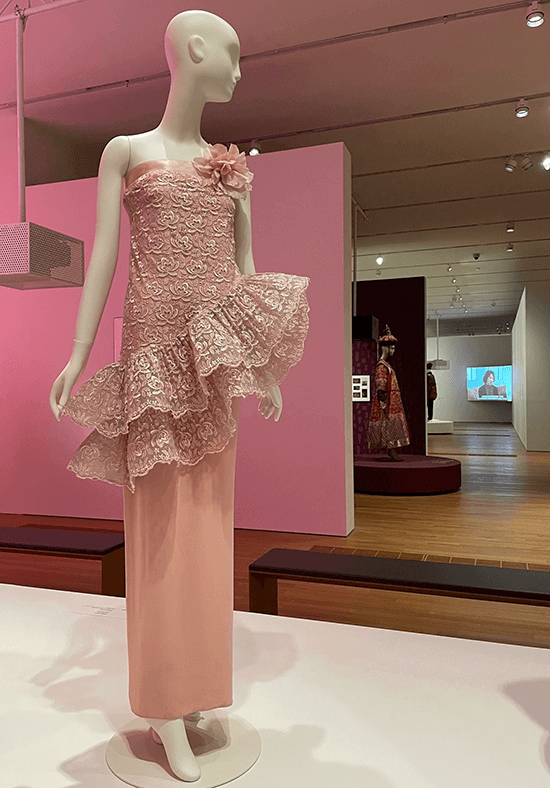
Madame Song is Song Huai-Kuei (1937-1997), who was born in Beijing, six years after the Japanese invasion of China. Her name Huai-Kuei means “missing Kuei” in memory of her younger brother. Although the title “madame” was meant to honor women of high social standing, its use waned in the time of the socialists. This was precisely why Song liked it; she herself was a relic of a bygone era.
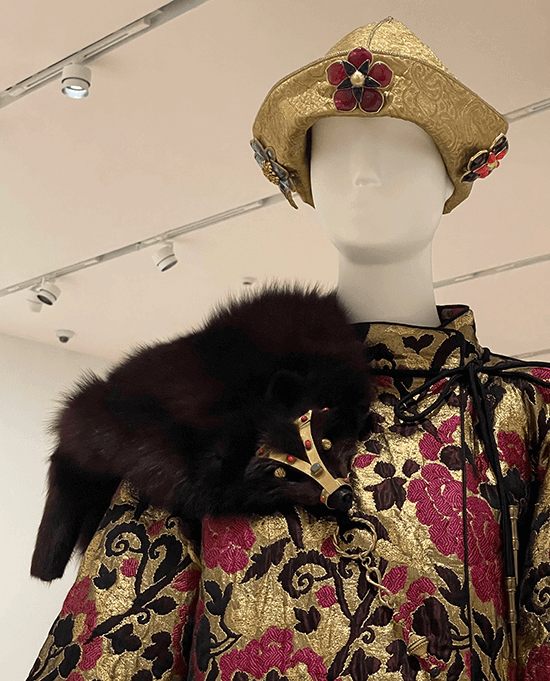
It was at Beijing’s Central Academy of Fine Arts that Song met fellow artist, the handsome Maryn Varbanov (1932-1989). She obtained a marriage license from no less than Premiere Zhou Enlai (1898-1976) for this was the first case of a Chinese citizen marrying a foreigner in the People’s Republic of China!
The marriage led to artistic collaborations in tapestry and moving to Sofia, Bulgaria, where they used this traditional and historical craft of the Balkans to create modern installations. Because of this they were able to exhibit in modern art shows beyond the Iron Curtain before moving to Paris.
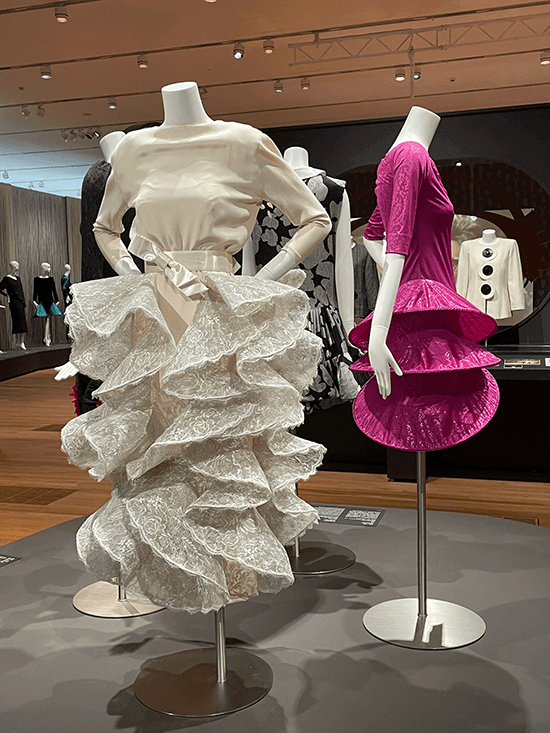
It was in Paris that another turning point in Song’s life occurred—she and her husband met Pierre Cardin (1922-2020), who is very much known to us fashion-conscious Filipinos as the house that designed the fitted barongs worn by President Ferdinand Marcos Sr.
I myself love this tapered form of the barong, which was created by Cardin’s designer Giovanni Sanna, who rented his Manila home from my late uncle, architect Pablo “Jun” Antonio.

The point is, Pierre Cardin might have never gotten around to opening a shop across my old alma mater, Assumption Herran, if not for Madame Song!
Cardin was a fashion mogul who wanted to branch into China and Song, following her entrepreneurial instincts, immediately gave up her own artistic career and moved back to China. There, she helped Cardin establish his empire at a time, in the early ’80s, when China was opening up and the avant-garde art and film scene was going into full swing.
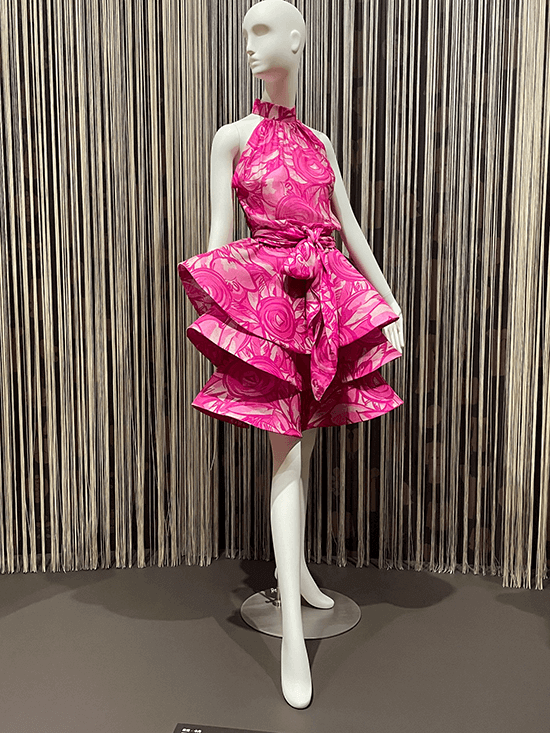
Cardin’s vibrantly colored collections were a hit in Beijing where once somber colors had reigned. Song organized fashion shows in the Chinese capital and trained Chinese models who would walk the catwalk in Paris as well! So she is known for promoting modeling in addition to fashion, because you cannot have one without the other.
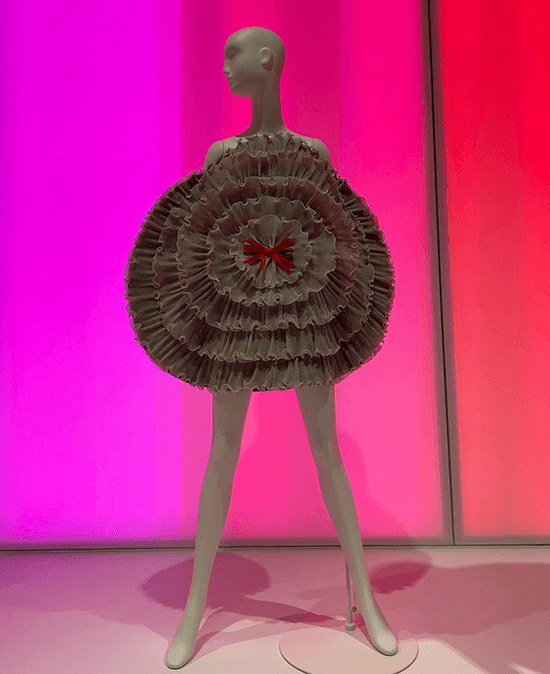
Then, Song became involved with Cardin’s restaurant venture when he opened a Beijing branch of Maxim’s, the famous French restaurant. Being the first Western dining spot to open after the Cultural Revolution, this was where local and foreign artists, business people and politicians gathered. Song became the hostess of Beijing’s elite.
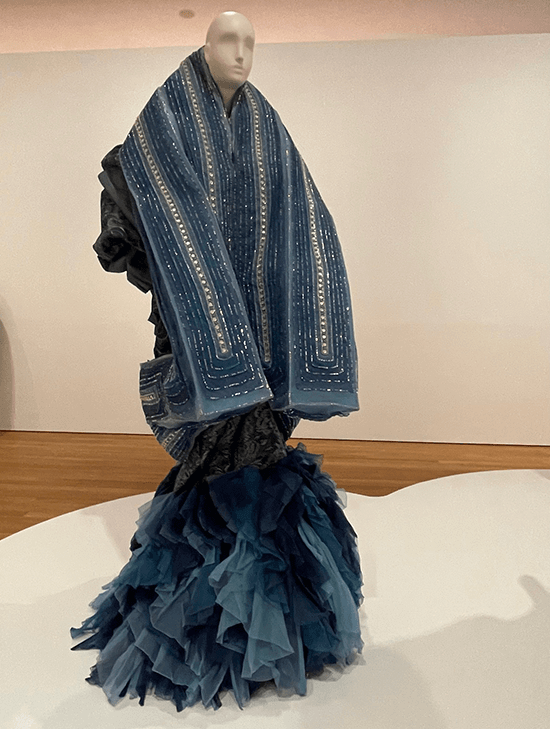
Needless to say her wardrobe, predominantly Cardin, was enviable, and we are so fortunate to have access to these fashion pieces, as well as those of other designers like John Galliano (at the time he was designing for Dior) and Guo Pei, a first-generation Chinese designer who emerged after the Cultural Revolution. Guo Pei’s work is idolized by my own fashion-designing daughter Hannah.
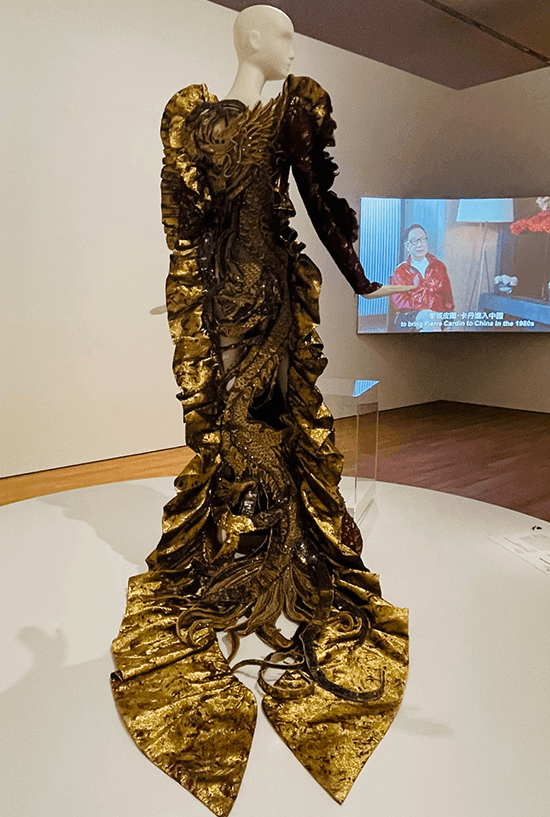
The Cardin collection alone tells its own rich story, each dress a piece in the puzzle that completes Song’s amazing life. She promoted film, and fashion in films, becoming one of the most famous characters herself in the film The Last Emperor. There, dressed in sumptuous Chinese costume, she played the empress. The movie, with its haunting score by Ryuichi Sakamoto, went on to win nine Oscars at the 60th Academy Awards, including Best Picture.

That not only her extraordinary fashion collection but also her tapestry collaborations and paintings are available to view at M+—not to mention films clips from movies she starred in or helped in production—is a gift to all of us and not just the Chinese.
To take your joys and passions and to share them with the world, taking your own culture and showcasing it abroad while bringing the best of abroad back home to be experienced by your own people—what a life. To have aided and encouraged both local and foreign designers (yes, Galliano needed her help with that incredible blue gown), not to mention filmmakers, models, restaurateurs—what an achievement.

The Madame Song exhibit at M+ is a rich and enriching experience so worth every centavo I paid for plane tickets. To take the ordinary up to the level of the extraordinary, and to bring the extraordinary down to the level of ordinary people like me, is to show the world how there is beauty and potential in the everyday, to encourage all to leap at the opportunities life presents us, and to follow our hearts every day of our ordinary yet extraordinary lives.


